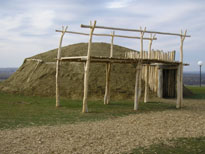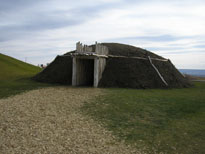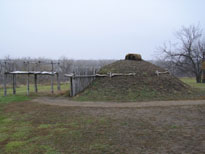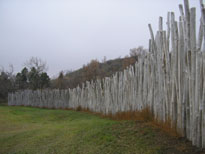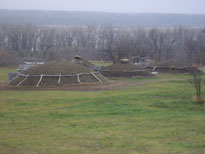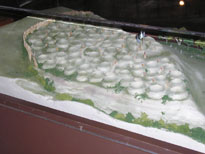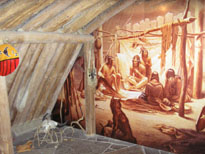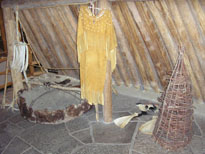
- Home
- Online Bookshelves
- Books and Research Materials
- Early National Era
- Corps of Discovery
 |
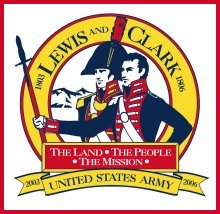 |
|
The People
The Mandan Indian Nation Lewis and Clark Spent the Winter of 1805-1805 with the Mandan Indians north of present day Bismarck, North Dakota. Their Indian hosts differed from many nomadic tribes that embraced the “hunter-gatherer” culture in that the Mandans lived in earth lodgings and extensively farmed the land. One translation of the word “Mandan” is “Those Who Dwell by the Water” or “River Dweller.” The Mandan tribal heritage goes back many centuries. Around 900 A.D. a group of Indians reached what is now the plains of South Dakota. Originally from the east coast and southeastern regions of the North American continent, they began to move slowly northward over the years, following a path that generally paralleled the Missouri River. Being farmers, they chose to build their villages near the fertile flood plains of the river. About 130 former village sites have been located along the Missouri by modern archeologists, of which probably no more than 10% were occupied at any one given time. By the mid-1600’s several villages had been established in the Heart River area. This included the “On-A-Slant” village depicted in the photos on this web page. The village was called “On-A-Slant” because it was built on a slope adjacent to the river. It was uncovered by an archeological expedition in 1937 and was probably occupied during the period 1650 – 1750. It is located about sixty miles south of where the Lewis and Clark Expedition wintered in 1804 – 1805. The Mandan tribe depended on the soil for a large part of their daily diet. They grew a variety of crops to include beans, squash, sunflowers, and tobacco, with corn being the main vegetable. Corn was ground into corn meal using a mortar and pestle. It was then boiled into a pudding or mixed with other foods. Beans and corn were often boiled together to make succotash. Vegetables were eaten fresh or dried for future consumption. Each family farmed a small parcel of land, moving to a new area when the soil was no longer productive. The Mandan tribe hunted buffalo, elk, deer, bear, beaver, turtle and game birds. Mandan culture dictated a clear cut division of labor between men and women. Warfare and hunting were the principal tasks of the male members of each tribe. The farming tasks, preparation of meals, and maintenance of lodges were some of the primary tasks of the women in the village. One important aspect of Mandan life was trade. The Mandan villages acted as a central meeting place for many tribes (such as Crows, Crees, Assiniboins, Cheyennes, Atsinas, and Sioux) who visited them beginning in June of each year and stayed for perhaps a month trading for goods. As a result, many Indians were multi-lingual and conversant in as many as five languages. By the 1700s French traders began visiting the Mandans, exchanging European manufactured goods for fur, food, and other items produced by the Indians.
|

